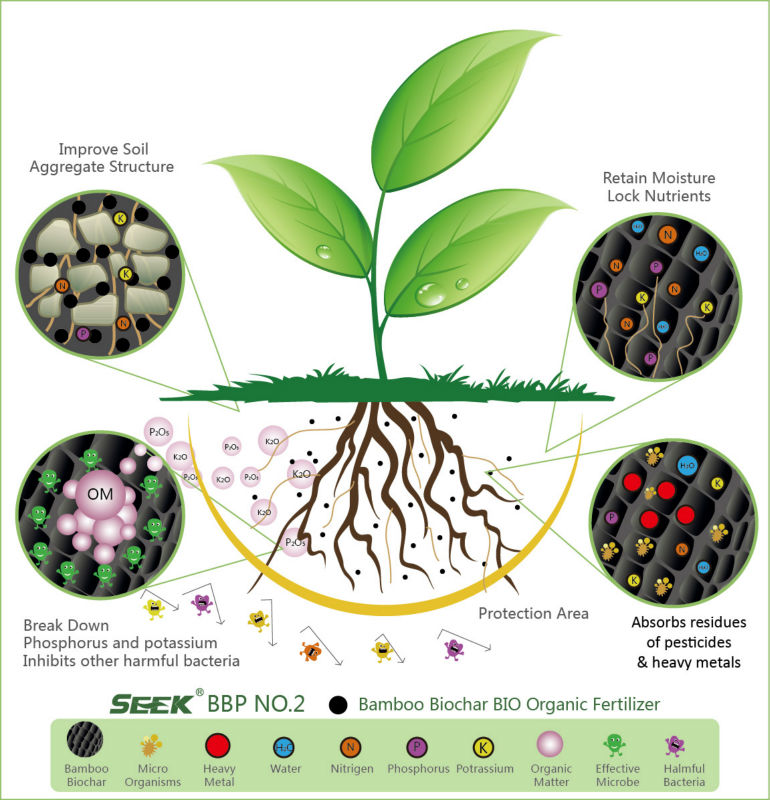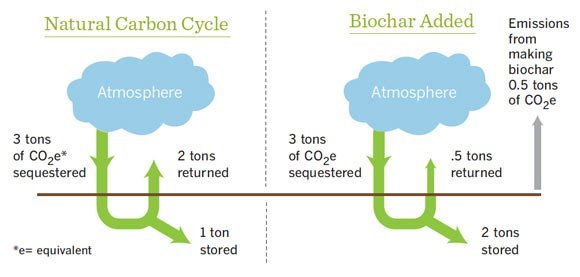Dirt, or more properly referred to as soil, is a mixture of minerals, organic matter, gases, liquids and organisms that work together to SUPPORT LIFE. It is pretty important stuff. We need it to grow our food supply; plant and meat. We need it to grow our fibers to make our clothes. It filters our ground water. Dirt is also the source of many of the antibiotics we use, such as Penicillin. This is only the surface of dirt's important..... So dirt deserves respect. Worms know where it's at-
So here is an important thing about dirt, when used or abused it stops doing it's job. When used for growing plants it's nutrients are depleted, when stripped of vegetation and overwork the much needed top soil washes away, when contaminated it can harbor the contaminates and transfer them to the vegetation or ground water. Dirt is meant to be treated better than, well, dirt.
Enter a BFF for dirt-
Biochar
What is Biochar? It is simply charcoal. More specifically it is charcoal made with the purpose to be added to soil, to improve soil. Biochar is made when something living/organic (for most people this is wood) is burned at very little oxygen. Our wood stove insert can burn wood with low enough oxygen to make some biochar. It looks like this-
As you can see it is not ash. Wood ash (aka potash), which is rich in potassium, is also good for the garden once weathered but is chemically and physically different from Biochar. (Remember burning stuff changes the physical and chemical composition of the item you are burning, depending on how you burn your item (high temps, low temps, etc.) affect the outcome of your item. For some reason a few of my cooking disasters are coming to mind).
If you have a wood burning stove in your home that can burn very efficient at low oxygen you could get some biochar. A better way to do it would be with something like this-
Please check out the many sources on the web on how to produce your own biochar.
Why Is It So Ridiculously Good?
First: It helps soil do it's important job.
- It holds essential nutrients in the soil longer.
- Biochar actually 'absorbs' the nutrients, such as from a fertilizer or compost, and holds it in the soil which otherwise could wash away (i.e. nutrient leaching). Less fertilizer used and less fertilizer washing into ground water is a good thing.
- It retains water and microorganisms.
- Biochar, being porous, helps soil retain water which could decrease the need for excess irrigation. The pores also provide a healthy environment for the soil's needed microorganisms to live AND reproduce. This makes dirt happy. It helps the soil support the life within the soil.
- It helps aerate the soil and can improve soil structure.
- Soil structure is super important, more on that here. Our soil is very compact and, without such additives, too compact to grow root vegetables and even take in water. (Yes, it is so compact water just runs off the surface.) We rely on aerating additives such as compost and biochar to make our garden grow (how about you Mary, Mary quite contrary). Oxygen in soil is important for the organisms living in it and plant roots need oxygen to sustain the plant.
 |
Second: Apparently it is also good for the environment.
- Biochar reduces green house gas emission into the atmosphere.
- According to ALL the biochar resources out there, biochar holds carbon and other concerning 'green house gases' in the soil longer. This is currently being researched more for helping lower carbon emissions into the atmosphere. For more information on this, read HERE and HERE.
- When animal waste is burned and made into biochar it reduces the methane gas (which is emitted naturally as waste decomposes) emissions into the atmosphere.
- Biochar helps improve groundwater
- Biochar retains and holds fertilizers and/or other agrochemicals in the soil. This keeps them accessible to the plant and keeps them from leaching into the groundwater.
 |
| Illustration from http://midwestpermaculture.com |
-Quick note that biochar is NOT a new discovery, biochar has been discovered in soil in the Amazonian Basin back around 450 BC and AD 950. Source of that tidbit is HERE: Terra Preta.
 |
| http://www.biochar.info/52/pix/comparison_biocharNpk_npk.jpg |
So in conclusion, I will now summarize how we make biochar at our house:
Step 1. We get cold and burn wood in our wood stove on low oxygen. I get warm and happy.
Step 2. Our wood stove box starts overflowing with charcoal so much we have to clean it out.
Step 3. We realize we made biochar for the garden and try to remember to store it somewhere outside where we can find it in the spring.
Step 4. Spring comes and we find our accumulated biochar.
Step 5. It is chunky and needs to be crushed, so Jonathan finds another use for his tractor. (He runs over the biochar with it).
Step 7. We turn it in with the garden soil and plant stuff. We use a organic fertilizer a few times during the season.
Step 8. We watch our tomato plants get taller than us and wonder why?
Step 9. We pick tomatoes the size of our daughter's head and Jonathan reminds me it is because he added biochar.
Step 10. We eat our food. Winter comes and we get cold again. So we start burning wood in our wood stove on low oxygen. We get warm and happy. Repeat cycle.










No comments:
Post a Comment